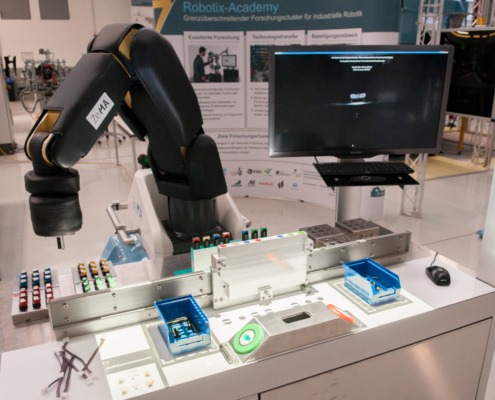Flexible Assembling through Human-Robot Collaboration

Problem definition
Due to the assembly of different product types and variants on one assembly system, a lot of time is needed for setting up the lines and adapting the robot programmes for the respective variant. Ensuring quality with an increasing number of variants is difficult for humans without assistance systems. The previously separated working areas of man and robot hinder the use of synergy effects.
Benefits of the solution
An increase of the first pass yield in a multi-variant assembly station can be achieved by directly available guidance of the worker and by checking the work steps. In addition, programming times can be shortened by pattern strips and the dynamic adaptation of the work steps.
Used technologies
Dynamic division of labour between human and robot with visual assistance and inspection of work steps using a projection system. The teaching-in of a further product variant without programming and the intuitive operation by the use of gesture control and capacitive sensor technology help in the implementation.
Fields of application
This technology can be used in electronics assembly as well as in hydraulic and pneumatic assembly.
